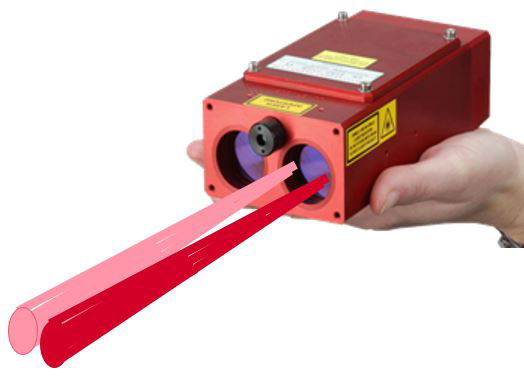Dual Laser Moisture Measurement For Surveyor

Traditionally damp in building structures is measured by forcing two metal probes or pins into a surface and measuring the conductivity of the material. A value for the amount of moisture can then be calculated. This has two problems. Firstly it often leaves 2 dents in the surface and secondly, if you want to assess a high object such as a ceiling, you also need a step ladder or long stick.
Water like all objects has different light absorption patterns. For example, shine white light on a surface (made up of many colours) and an object that looks green for example, is effectively absorbing all of the colours except green. Black absorbs all of the colours and white of course doesn’t absorb visible colours.
Many objects also absorb colours which the human eye can not see. In the case of water, it has a couple of absorption bands in the 1-2 micron region.
So if I pulse a laser pointed towards a surface being tested which isnt absorbed by water, then I can find the reflectivity of the surface irrespective of the water. If I then pulse a laser of a slightly different wavelength which is absorbed by water, the amount of returned light from this laser will be degraded based on the amount of water in the surface.
This is a non-contact way to measure the dampness of a surface without the need to climb ladders or damage the surface. This is one of a few private consultancy jobs that I did whilst a student at university for a well known moisture measurement tool company to create a prototype.